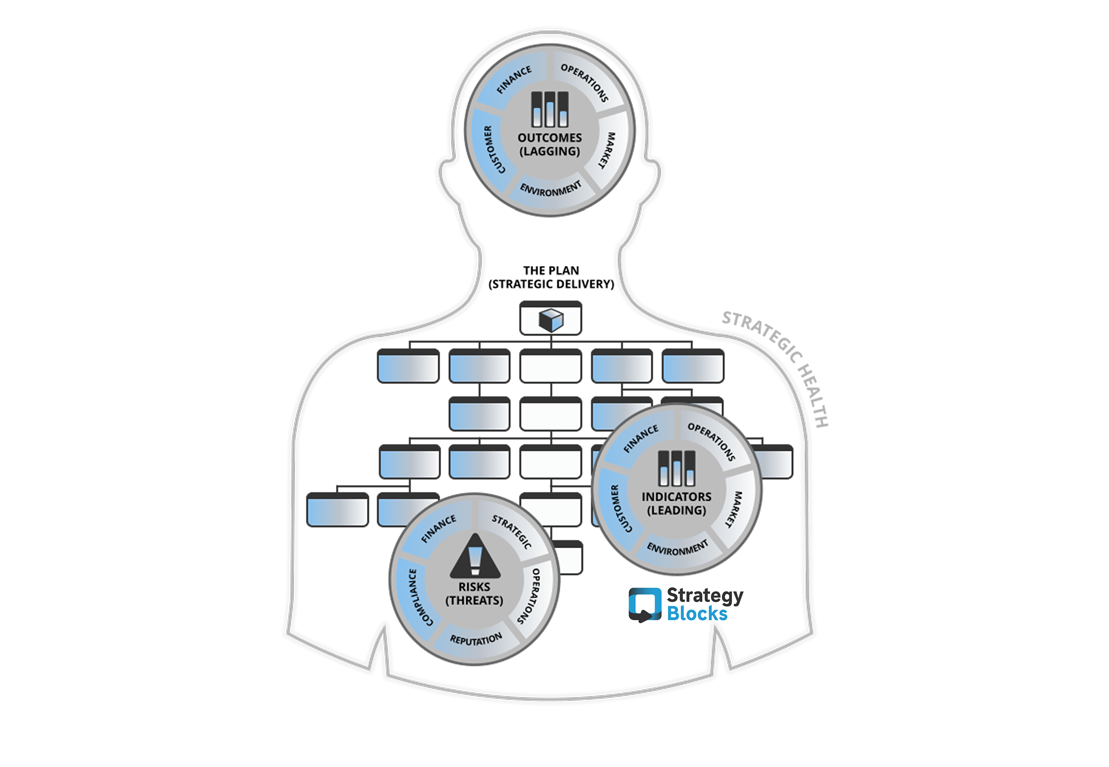Dissecting Success: The Anatomy of a Powerful Strategic Review
An Imperfect Market
In a perfect market, regular reviews of business strategy wouldn’t be necessary. A truly dynamic strategic plan would continuously adapt as successful programs of work are completed. New initiatives would constantly be added, keeping the plan fresh. StrategyBlocks, a strategic enablement platform, supports this dynamic approach, including both top-down macro-planning and bottom-up micro-planning (also known as ideation). However, the real world is messy, markets are imperfect, and things rarely go exactly according to plan.
What Triggers the Strategic Review
A review is almost always required when a long-term outcome, measured by numbers, isn’t achieved. We can call this a ”lagging indicator”, it is lagging as it is a result of something that has already happened, and once our actual achievement toward a set target is not reached, it is often too late to take the necessary corrective action. So, a strategic review is initiated.
What went wrong
Failure to achieve the desired outcome(s) can be generally attributable to one, some or all of the following:
- Doing the wrong things – pursuing an incorrect strategic work program
- Not doing what we agreed – an internal failure to deliver
- Failing to identify the cause – measuring the wrong performance indicators
- Missing a shift in the market – being negatively affected by an external risk
Breaking Down the Problem
What are the key components that need to be considered as part of any strategic review?
Starting with the end in mind, what will success look like and how do we quantify that success? Often it is financial, and represents an improved return to stakeholders, whether that is found through financial growth or operational efficiency. Outcomes may also include other benefits to customers, the planet, and the industry.
Stratification – Recommendation #1
Vision and mission encompass everything the organization does, and every contributing program of work must align to this point. Identified outcomes must be fundamentally linked to the highest levels of the plan, as these statements will lead the output of the entire enterprise toward the achievement of these outcomes.
The body of the Strategic Plan itself provides the logical structure for delivering work. It ensures alignment and accountability across teams, offering clear transparency. Follow a macro-planning process to systematically break down high-level activities into smaller tasks by clearly outlining what’s needed to deliver each.
Simplification – Recommendation #2
Consider only those key performance indicators that link directly to the identified work programs, projects, and activities. Don’t let those indicators be “lost in the noise”.
Leading indicators are like taking the pulse of the business. Once strategic initiatives are defined, aligned, and assigned to teams, it’s crucial to link them with performance indicators. These metrics, acting as leading indicators, are data sets that provide early signs of progress towards the agreed-upon future outcome. They play a key role in ensuring the plan is on track.
Standardization – Recommendation #3
Consider the potential points of failure at each point in the plan. What you are likely to discover is that there will be common risks. Identifying steps to mitigate against these common risks will benefit the plan as a whole.
No plan exists in a vacuum; threats are inevitable. While external threats are unavoidable, they can be considered. By formulating mitigation steps before the risk occurs, we can lessen the impact of these unforeseen events. Internal threats, such as project failure, are also a possibility. Considering the potential impact of these internal challenges is crucial for a successful plan.
Final Thoughts
Achieving a successful review of strategic direction requires a proactive approach. While a perfect world eliminates the need for reviews, the reality is that unforeseen circumstances and internal challenges can derail progress. The key lies in adaptability. A well-crafted strategic plan, built with clear goals and measurable outcomes, provides the roadmap. Leading indicators act as an early warning system, allowing course correction before problems arise. Regular monitoring ensures alignment and accountability across teams. By acknowledging potential threats and formulating mitigation strategies, we can navigate the inevitable bumps along the road and achieve success.




Leave A Comment